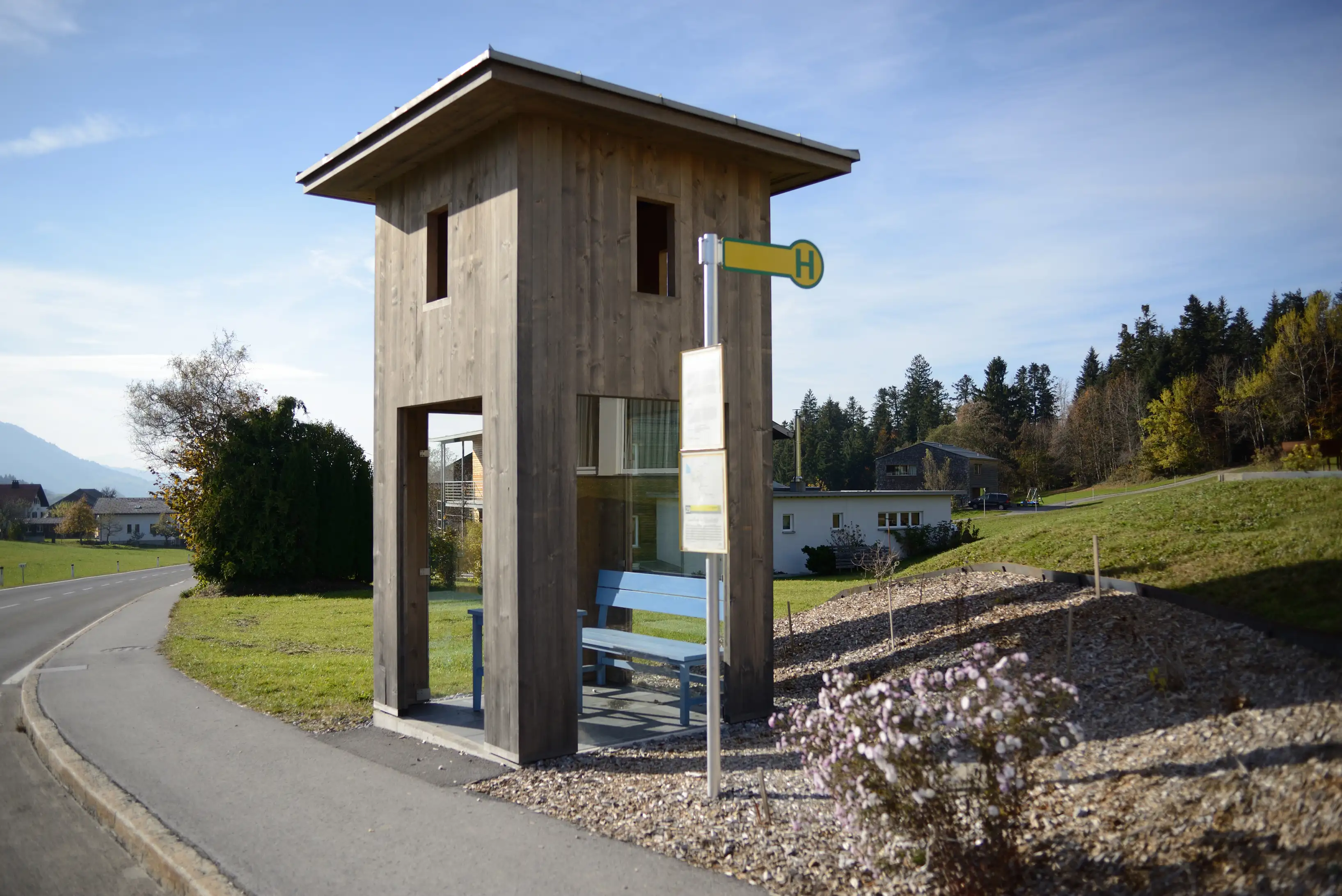It’s now seen as cool to identify as a responsible road user
Among Vorarlberg's many strengths there are two it is best known for. The first is its excellent, extensive public transport network, and the second the strong affinity the region has with building and architecture. Travelling by bus and rail has acquired a substantially more positive image over the last two decades compared to private transport. As a result, long-established motorists in Vorarlberg aren't embarrassed any more if they are caught taking the bus now and again. Indeed, coming out as a responsible citizen by using public transport – not just in one's leisure time but also when commuting to work – is even seen as cool these days.
As far as building goes, the people of Vorarlberg have always been single-minded and unconventional, with an eye for quality. The cliché that Vorarlbergers are born with the idée fixe of a one-family house has more than a grain of truth. From what source this perennial desire springs is a subject we can speculate about for a long time, but its practical effects are everywhere to be seen and appreciated in many architectural gems throughout the region.
In Bregenz there's not only the Kunsthaus by Peter Zumthor, Vorarlberg Museum by Andreas Cukrowicz and Anton Nachbaur and of course Bregenz Festival House itself, which owes its present form to Helmut Dietrich and Much Untertrifaller, no, even the tax office is housed in a building designed by a famous architect, Jean Nouvel from France. In smaller municipalities, too, the design of what are supposedly merely functional buildings such as schools, local authority offices or fire stations is entrusted to building firms and artisans that set store by contemporary design and the intelligent use of high quality materials. It's not really possible to put up something ordinary in Vorarlberg any more, so strong is the example set by the truly exemplary buildings mentioned, and by many others.
One of the most interesting projects in this connection from last few years is a synthesis of public transport and architecture – there could be no more graphic illustration of the strengths postulated above for Vorarlberg.
"Wartehüsle" - bus stop shelter
Krumbach in the northern part of Bregenz Forest, together with a private art society, recently commissioned seven international architectural firms to design a "wartehüsle", or bus stop shelter, on the rural bus route round the municipality. The result is a kind of international architecture exhibition for mobile visitors, where the exhibits can both be used and marvelled at. Anyone planning to go on a tour of these innovative bus shelters (principled people will take the bus, but unfortunately it's easier by car) might like to know the extraordinary fact that the architects involved – namely Alexander Brodsky from Russia, Rintala Eggertsson Architects from Norway, Architecten de Vylder Vinck Taillieu from Belgium, Ensamble Studio Antón García-Abril & Débora Mesa from Spain, Smiljan Radic from Chile, Amateur Architecture Studio Wang Shu & Lu Wenyu from China and Sou Fujimoto from Japan – accepted the wartehüsle job in exchange for a few days' holiday in Bregenz Forest and received no remuneration. Now I think you'll agree: such powers of persuasion are only found in those who are convinced of their own worth!
(wm) / 22.10.2018












